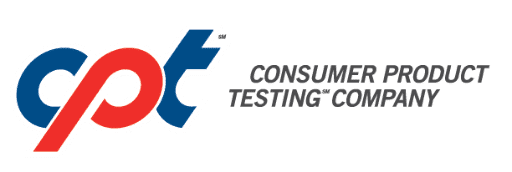Wet Chemistry Testing at CPTSM Labs
Wet chemistry refers to that branch of qualitative and quantitative analytical testing which employs ‘classical’ laboratory techniques such as extractions, the inducing of chemical reactions, performing titrations, observing colorimetric reactions and changes of physical state, and thin layer chromatography (TLC).
Although modern instrumentation has now replaced many wet chemistry testing methods, classical wet chemistry techniques are still relevant, and retain their importance as critical steps in the preparation and work-up of samples that employ more modern analytical techniques such as chromatography (UPLC, HPLC and GC) and spectrophotometry (ICP and AA) techniques.
Many modern laboratories have greatly reduced their classical wet chemistry test offerings simply because their staff may not include chemists who are sufficiently experienced and trained in the classical techniques.
These classical techniques commonly involve sample manipulations which require a high level of skill, finesse and lab savviness. Although today’s analytical chemistry labs are science-based, there is still an element of ‘art’ that is required to execute both the classical and modern methodologies with equal acumen.
CPT℠ continues to provide ‘classical’ wet chemistry testing services over a broad spectrum of raw material, finished product, and special project testing. Many of our clients first partnered with us because of our testing expertise in the area of classical wet chemistry, which has unfortunately become a rarity in today’s world of contract testing.
CPT℠’s Wet Chemistry Lab is specially designed to provide the proper workspace for performing rigorous and wide-ranging chemical reactions and sample manipulations, while at the same time providing a safe environment for the analysts who work with hazardous chemicals that are required for conducting wet chemical testing, on a daily basis.
Wet chemistry testing may be divided into two general categories, characterized by the usage or non-usage of simple analytical instrumentation. The categories may be described as follows:
Classical Wet Chemistry
Classical wet chemistry applications include both qualitative and quantitative methods. Qualitative methods are generally used to identify a substance or to verify the presence/absence of a particular chemical compound. Quantitative wet chemistry methods are used to determine the assay or quantity of analyte present in a sample, employing basic laboratory techniques such as the performance of titrations.
Instrumental Wet Chemistry
Instrumental wet chemistry applications include both qualitative and quantitative methods which utilize simple analytical instruments such as lab scales, pH meters, automatic titrators, microscopes, and UV/Visible spectrophotometers.
Just as in classical wet chemistry, qualitative instrumental wet chemistry methods are used to verify the presence/absence of a particular chemical compound in a sample, while the quantitative methods are used to determine the assay or quantity of analyte present by measuring absorbance/transmittance of a solution at a particular wavelength, the weight of a precipitate formed, weight-loss through volatilization, or quantity of titrant required to reach a particular pH value or intensity of color/turbidity.
Our Capabilities
CPTSM Labs offers both qualitative and quantitative wet chemistry testing which serve to identify a particular substance, verify the presence/absence of a particular substance, and to determine the quantity of analyte present in a sample.
Methods may be derived from current compendia, vendor and literature sources, or at the request of the client, from previous (obsolete) versions of compendia or other sources. (Yes, clients are sometimes required to conduct testing in accordance with a methodology which has been superseded by more modern methods. This sometimes occurs when compendial methods change while a stability study is in progress, or in the case of an approved Prescription Drug whereby methods are defined within the NDA/ANDA, regardless of compendia changes which may occur.)
Our Classical Wet Chemistry Services
Wet chemistry services at CPTSM Labs include, but are not limited to the following.
Presence/Absence Tests – Verify the presence or absence of an analyte in a sample, typically in the same manner as ID Tests are conducted.
Limit Tests – Determination that if present, an analyte does not exceed a specific level. This is typically accomplished by comparing the intensity of the color/turbidity of a known solution, or the size or color intensity of a Standard ‘spot’ on a TLC plate, to that of the sample.
Titrimetry – Determination of the quantity of analyte present in a sample by employing a chemical reaction between a titrant of known attributes, and the sample. Such reactions are stoichiometric, i.e., known to occur in a specific ratio between the titrant and analyte.
Gravimetry – Determination of the quantity of analyte present in a sample by employing a reaction which results in the physical precipitation or volatilization of the analyte.
Colorimetry – Determination of the quantity of analyte present in a solution by measuring the absorbance or transmittance of UV/Visible light at a specific wavelength versus that of a solution of the analyte of known concentration.
Physicochemical Testing – The determination of physical and chemical properties of a substance. A typical example would be the testing of plastic packaging systems per USP <661> for extractables, buffering capacity, and nonvolatile residues.
Polarimetry/Refractometry – Determination of the purity of a compound by measuring the extent to which a substance (or solution thereof) ‘bends’ visible light.
How Can CPTSM Labs Assist with Your Wet Chemical Testing?
Our in-house experts are ready to offer their assistance with the wet chemical testing of your raw materials, drug products, container/closure systems and special projects. Wet chemical testing may have become a ‘lost art’ in many other labs, but not at CPT℠.
Our well-seasoned staff is adept at performing both classical wet chemical testing and also the most modern, up-to-date methodologies employing our state-of-the-art analytical instrumentation; All within a testing environment of the highest compliance with the requirements of GMP, GLP, USP and ISO/IEC 17025.
